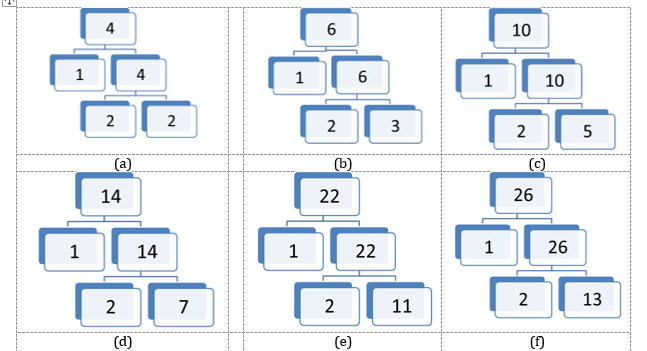Distribution of prime numbers Distribution of the prime numbers
DOI:
https://doi.org/10.12928/bamme.v4i1.10408Keywords:
complex numbers, even numbers, number theory, prime numbers, prime number distributionAbstract
This research explores the distribution of prime numbers, which are a fundamental topic in number theory. The study originated from the author's fascination with mathematics and the desire to discover something novel. The research proposes that the distribution of prime numbers follows a regular pattern starting from the number 2. The author suggests that prime numbers can be obtained by dividing certain even numbers that have four factors by the number 2, resulting in prime numbers in sequential order. This hypothesis was tested and confirmed through the practical application of the proposed mathematical formula. Additionally, the study found that even numbers greater than or equal to 8, with six or more factors, produce complex numbers. Thus, this research provides two main contributions: firstly, a mathematical formula for the distribution of prime numbers, and secondly, a formula for the distribution of complex numbers. These findings have potential applications in various mathematical fields, including cryptography and problem-solving in number theory.
References
Zhang, Y. (2014). "Bounded gaps between primes." Annals of Mathematics, 179(3), 1121-1174.
Goldston, D. A., Pintz, J., & Yıldırım, C. Y. (2009). "Primes in tuples I." Annals of Mathematics, 170(2), 819-862.
Maynard, J. (2015). "Small gaps between primes." Annals of Mathematics, 181(1), 383-413.
Tao, T. (2016). “An introduction to the prime number theorem”. Princeton University Press.
Granville, A. (2019). “Prime numbers and the Riemann hypothesis”. Cambridge University Press.
Conrey, J. B. (2003). "The Riemann Hypothesis." Notices of the AMS, 50(3), 341-353.
Gowers, T. (2009). "Primes and their distribution." The Princeton Companion to Mathematics.
Hardy, G. H., & Wright, E. M. (2008). “An introduction to the theory of numbers”. Oxford University Press.
Green, B., & Tao, T. (2008). "The primes contain arbitrarily long arithmetic progressions." Annals of Mathematics, 167(2), 481-547.
Maier, H. (1985). "Primes in short intervals." Michigan Mathematical Journal, 32(2), 221-225.
Soundararajan, K. (2010). "Small gaps between prime numbers: the work of Goldston-Pintz-Yıldırım." Bulletin of the American Mathematical Society, 47(1), 1-18.
Vaughan, R. C. (1997). “The Hardy-Littlewood method”. Cambridge University Press.
Bombieri, E. (2007). "Problems of the Millennium: The Riemann Hypothesis." Clay Mathematics Institute.
Selberg, A. (1949). "An elementary proof of the prime number theorem." Annals of Mathematics, 50(2), 305-313.
Montgomery, H. L., & Vaughan, R. C. (1974). "The large sieve." Mathematika, 20(2), 119-134.
Hildebrand, A. (1987). "On the number of prime numbers in short intervals." Mathematical Proceedings of the Cambridge Philosophical Society, 101(1), 25-27.
Heath-Brown, D. R. (1988). “Prime number theory”. Clarendon Press.
Baker, R. C., Harman, G., & Pintz, J. (2001). "The difference between consecutive primes, II." Proceedings of the London Mathematical Society, 83(3), 532-562.
Ingham, A. E. (1990). “The distribution of prime numbers”. Cambridge University Press.
Tenenbaum, G. (2015). “Introduction to analytic and probabilistic number theory”. American Mathematical Society.

Downloads
Published
Issue
Section
License
Copyright (c) 2024 Lolav Ahmed Khalil

This work is licensed under a Creative Commons Attribution-ShareAlike 4.0 International License.
Authors who publish with this journal agree to the following terms:
- Authors retain copyright and grant the journal right of first publication with the work simultaneously licensed under Creative Commons Attribution License that allows others to share the work with an acknowledgement of the work's authorship and initial publication in this journal.
- Authors are able to enter into separate, additional contractual arrangements for the non-exclusive distribution of the journal's published version of the work (e.g., post it to an institutional repository or publish it in a book), with an acknowledgement of its initial publication in this journal.
- Authors are permitted and encouraged to post their work online (e.g., in institutional repositories or on their website) prior to and during the submission process, as it can lead to productive exchanges, as well as earlier and greater citation of published work (See The Effect of Open Access).



